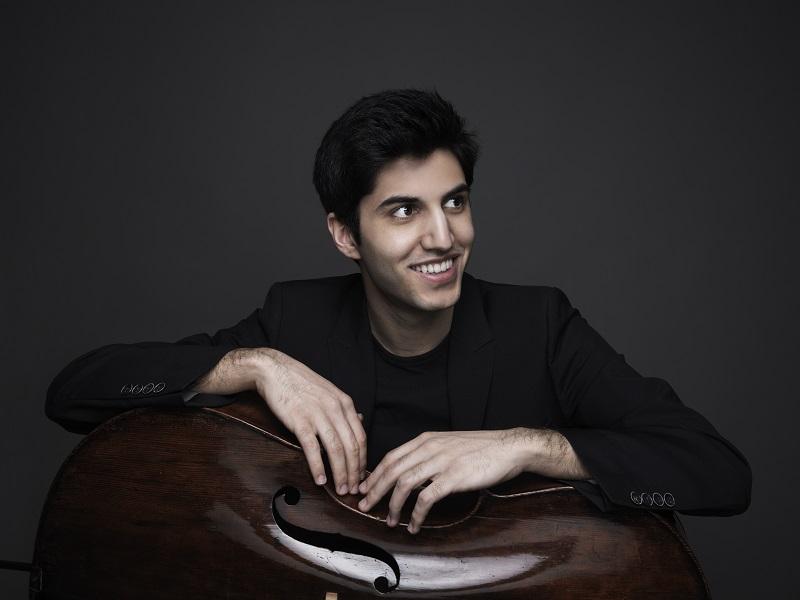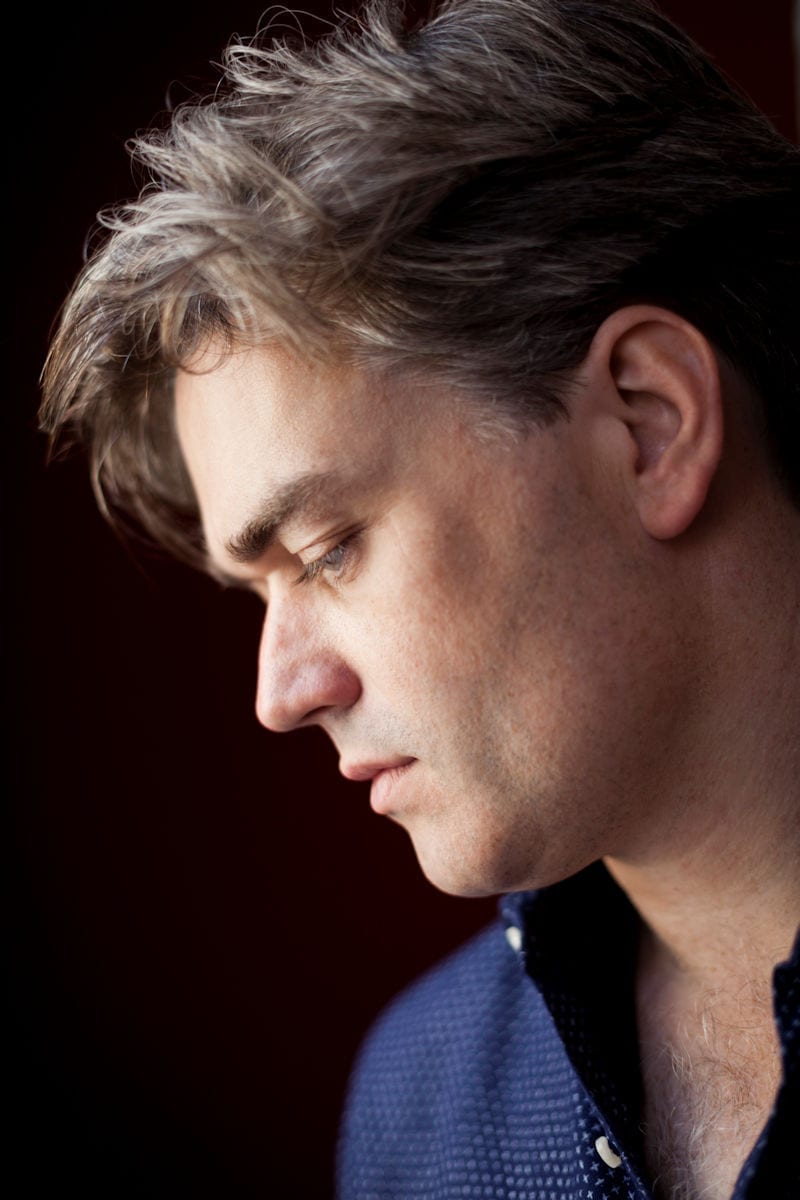Soltani, LPO, Gardner, RFH review – disciplined and dynamic accounts | reviews, news & interviews
Soltani, LPO, Gardner, RFH review – disciplined and dynamic accounts
Soltani, LPO, Gardner, RFH review – disciplined and dynamic accounts
Elegant Elgar, keenly focussed but sometimes lacking nuance

No successor has yet been named to Vladimir Jurowski as Principal Conductor of the London Philharmonic, so it is interesting to note that Edward Gardner is making several appearances with the orchestra this season. The two conductors are similar in their dynamic approach and brisk, efficient tempos.
The concert also introduced a soloist still in his mid-20s alongside the LPO, Austrian-Persian cellist Kian Soltani. His playing is precise and secure, with particularly fine tonal control. His vibrato is indicative – absolutely even and applied continuously, the resulting tone focused and direct, but lacking in nuance. That made for a slightly detached reading of the Elgar Cello Concerto, though that might be a blessing, given how often the work is presented at the other extreme, as an indulgent display of emotion.
 Neither Soltani nor Gardner deprived the music of shape or colour, with strong timbral contrasts between themes from both cello and orchestra. Soltani also pulled around the even semiquavers of the Scherzo theme, almost to the point of unrecognisably, but by doing it exactly the same way every time, made even that sound uniform. The big themes felt a little lacking in expression, for Soltani’s disciplined articulation and narrow tone – or perhaps he was just letting the music speak for itself? But there were many moments of magic too, like the quiet before the storm, just before the coda of the last movement, the sense of stillness here conjured by the cellist was ideal. An unusual reading, but much of it satisfying – as was Soltani’s encore, a composition of his own, drawing on his Persian roots and channelling the sound of the oud.
Neither Soltani nor Gardner deprived the music of shape or colour, with strong timbral contrasts between themes from both cello and orchestra. Soltani also pulled around the even semiquavers of the Scherzo theme, almost to the point of unrecognisably, but by doing it exactly the same way every time, made even that sound uniform. The big themes felt a little lacking in expression, for Soltani’s disciplined articulation and narrow tone – or perhaps he was just letting the music speak for itself? But there were many moments of magic too, like the quiet before the storm, just before the coda of the last movement, the sense of stillness here conjured by the cellist was ideal. An unusual reading, but much of it satisfying – as was Soltani’s encore, a composition of his own, drawing on his Persian roots and channelling the sound of the oud.
Gardner (pictured above by Benjamin Ealovega) opened the concert with Beethoven’s Egmont Overture. A much larger string section than Beethoven is usually afforded gave real weight to the opening downbow chords, and Gardner was able to maintain that solemn, imperious mood throughout, despite some poor tonal control from the horns. In the second half, Mahler’s First Symphony was given in a similarly bold and forthright account. Gardner’s disciplined tempos here seemed a little restrictive for the push and pull of Mahler’s ever-flexible phrasing, but the payoff was a keen sense of the music’s structure. In the tuttis, the brass sometimes sounded as if they were uncomfortable with Gardner’s brisk tempos, but they always delivered the clean, angular articulations he sought. The result was an impressively dynamic account, but suitably weighty, and never lacking drama or atmosphere.
rating
Share this article
Add comment
The future of Arts Journalism
You can stop theartsdesk.com closing!
We urgently need financing to survive. Our fundraising drive has thus far raised £49,000 but we need to reach £100,000 or we will be forced to close. Please contribute here: https://gofund.me/c3f6033d
And if you can forward this information to anyone who might assist, we’d be grateful.

Subscribe to theartsdesk.com
Thank you for continuing to read our work on theartsdesk.com. For unlimited access to every article in its entirety, including our archive of more than 15,000 pieces, we're asking for £5 per month or £40 per year. We feel it's a very good deal, and hope you do too.
To take a subscription now simply click here.
And if you're looking for that extra gift for a friend or family member, why not treat them to a theartsdesk.com gift subscription?
more Classical music
 BBC Proms: Kholodenko, BBCNOW, Otaka review - exhilarating Lutosławski, underwhelming Rachmaninov
Polish composers to the fore in veteran conductor’s farewell
BBC Proms: Kholodenko, BBCNOW, Otaka review - exhilarating Lutosławski, underwhelming Rachmaninov
Polish composers to the fore in veteran conductor’s farewell
 theartsdesk at the Pärnu Music Festival 2025 - Arvo Pärt at 90 flanked by lightness and warmth
Paavo Järvi’s Estonian Festival Orchestra still casts its familiar spell
theartsdesk at the Pärnu Music Festival 2025 - Arvo Pärt at 90 flanked by lightness and warmth
Paavo Järvi’s Estonian Festival Orchestra still casts its familiar spell
 BBC Proms: Batsashvili, BBC Scottish Symphony Orchestra, Ryan Wigglesworth review - grief and glory
Subdued Mozart yields to blazing Bruckner
BBC Proms: Batsashvili, BBC Scottish Symphony Orchestra, Ryan Wigglesworth review - grief and glory
Subdued Mozart yields to blazing Bruckner
 Classical CDs: Hens, Hamburg and handmaids
An unsung French conductor boxed up, plus Argentinian string quartets and baroque keyboard music
Classical CDs: Hens, Hamburg and handmaids
An unsung French conductor boxed up, plus Argentinian string quartets and baroque keyboard music
 BBC Proms: McCarthy, Bournemouth SO, Wigglesworth review - spring-heeled variety
A Ravel concerto and a Walton symphony with depth but huge entertainment value
BBC Proms: McCarthy, Bournemouth SO, Wigglesworth review - spring-heeled variety
A Ravel concerto and a Walton symphony with depth but huge entertainment value
 BBC Proms: First Night, Batiashvili, BBCSO, Oramo review - glorious Vaughan Williams
Spirited festival opener is crowned with little-heard choral epic
BBC Proms: First Night, Batiashvili, BBCSO, Oramo review - glorious Vaughan Williams
Spirited festival opener is crowned with little-heard choral epic
 Interview: Quinteto Astor Piazzolla on playing in London and why Mick Jagger's a fan
Music Director Julián Vat and pianist Matias Feigin compare notes on Piazzolla
Interview: Quinteto Astor Piazzolla on playing in London and why Mick Jagger's a fan
Music Director Julián Vat and pianist Matias Feigin compare notes on Piazzolla
 Classical CDs: Bells, birdsong and braggadocio
British contemporary music, percussive piano concertos and a talented baritone sings Mozart
Classical CDs: Bells, birdsong and braggadocio
British contemporary music, percussive piano concertos and a talented baritone sings Mozart
 Siglo de Oro, Wigmore Hall review - electronic Lamentations and Trojan tragedy
Committed and intense performance of a newly-commissioned oratorio
Siglo de Oro, Wigmore Hall review - electronic Lamentations and Trojan tragedy
Committed and intense performance of a newly-commissioned oratorio
 Alfred Brendel 1931-2025 - a personal tribute
A master of feeling and intellect
Alfred Brendel 1931-2025 - a personal tribute
A master of feeling and intellect
 Aldeburgh Festival, Weekend 2 review - nine premieres, three young ensembles - and Allan Clayton
A solstice sunrise swim crowned the best of times at this phoenix of a festival
Aldeburgh Festival, Weekend 2 review - nine premieres, three young ensembles - and Allan Clayton
A solstice sunrise swim crowned the best of times at this phoenix of a festival

Comments
It was the Overture to Egmont
Changed, with thanks for the
Changed, with thanks for the correction.